Ecological studies often require large expanses to incorporate the array of interactions, the differing types of representative habitats and range of movement among the principle species or disease agents under study. Ames’ ability to address questions on an ecological scale is immense.
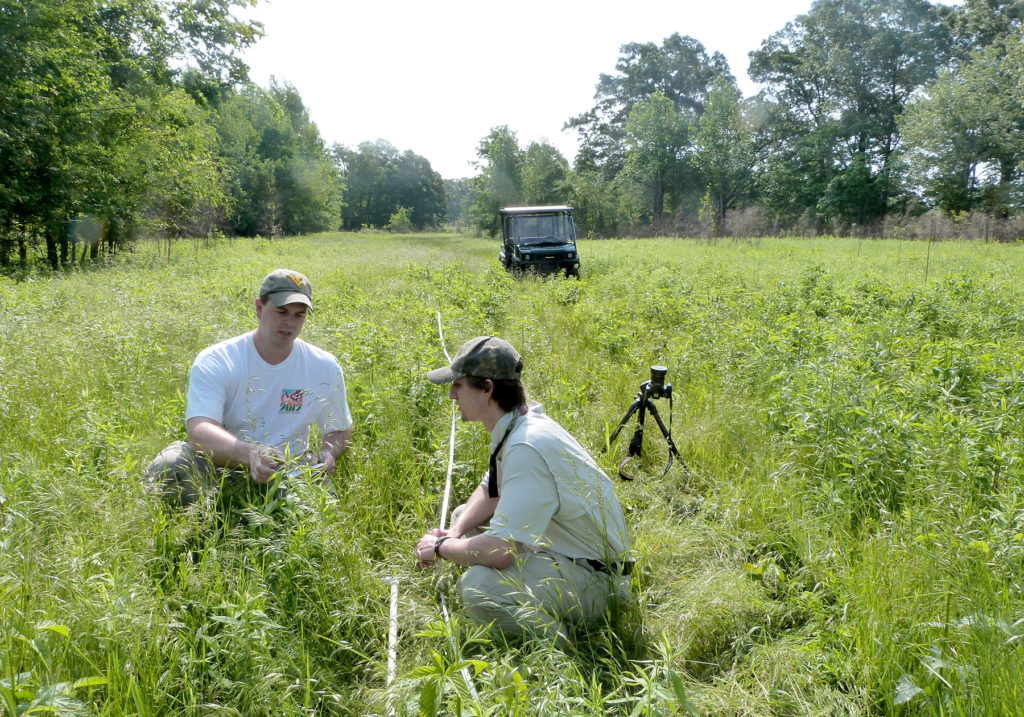
Large scaled habitats must be critically assessed and specific parameters carefully measured to be able to correlate the items of interest to see if significant relations occur. 
Once habitats are identified and documented, tick populations are sampled using two techniques. A cloth “drag” is used to capture ticks currently seeking a host by questing on the vegetation, waiting to hitch a ride. 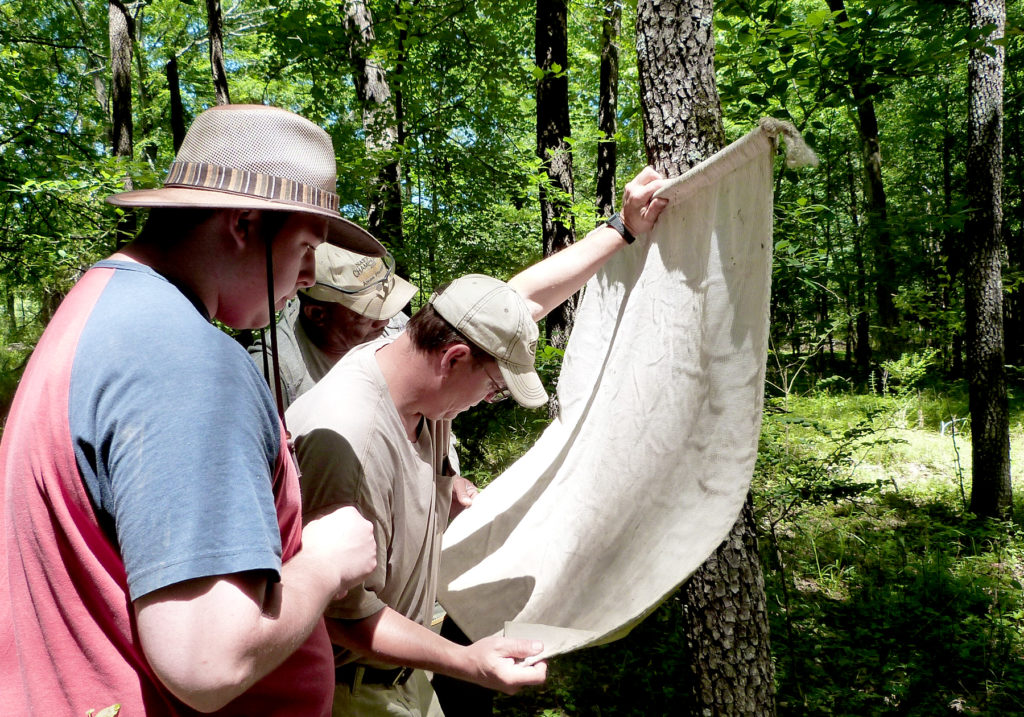
After a specified distance or timed interval, the drag is then searched for clinging ticks. 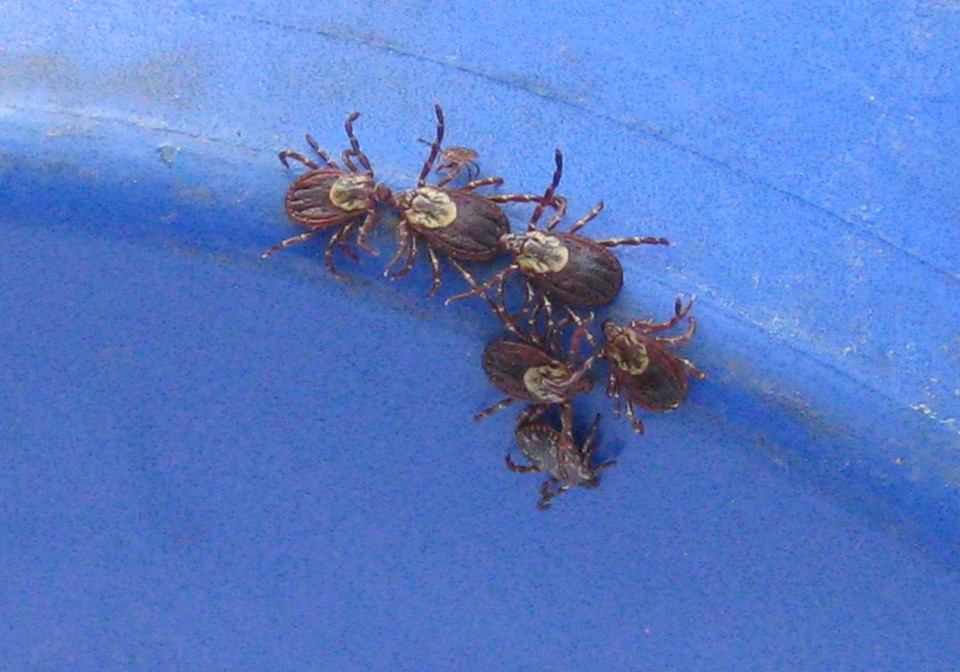
The jugs often have ticks come morning, 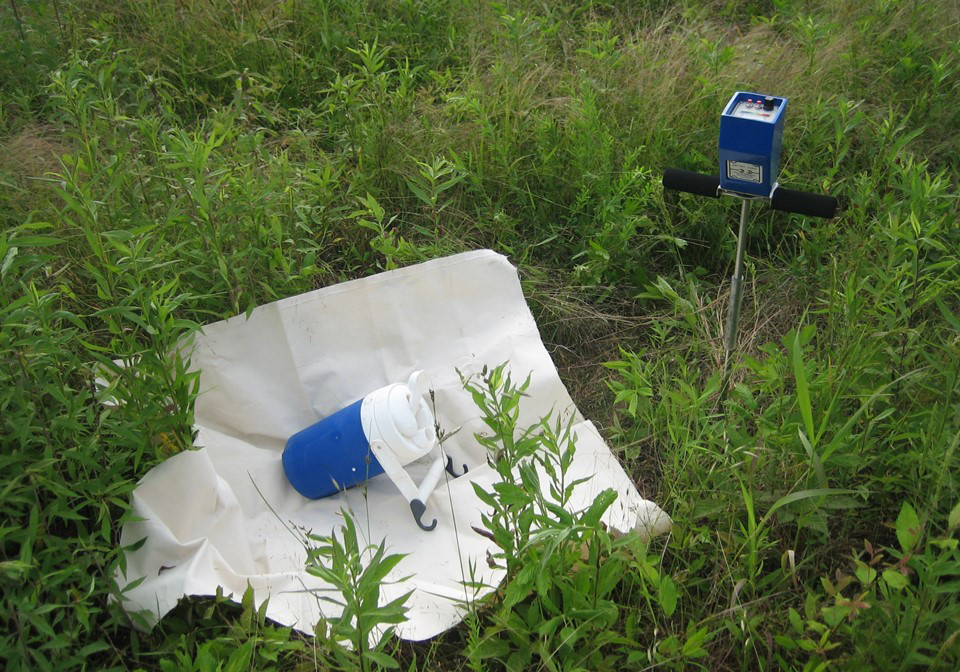
Small coolers are filled with dry ice, which sublimates, giving off carbon dioxide and mimicking a host. These are left within the different habitats overnight. 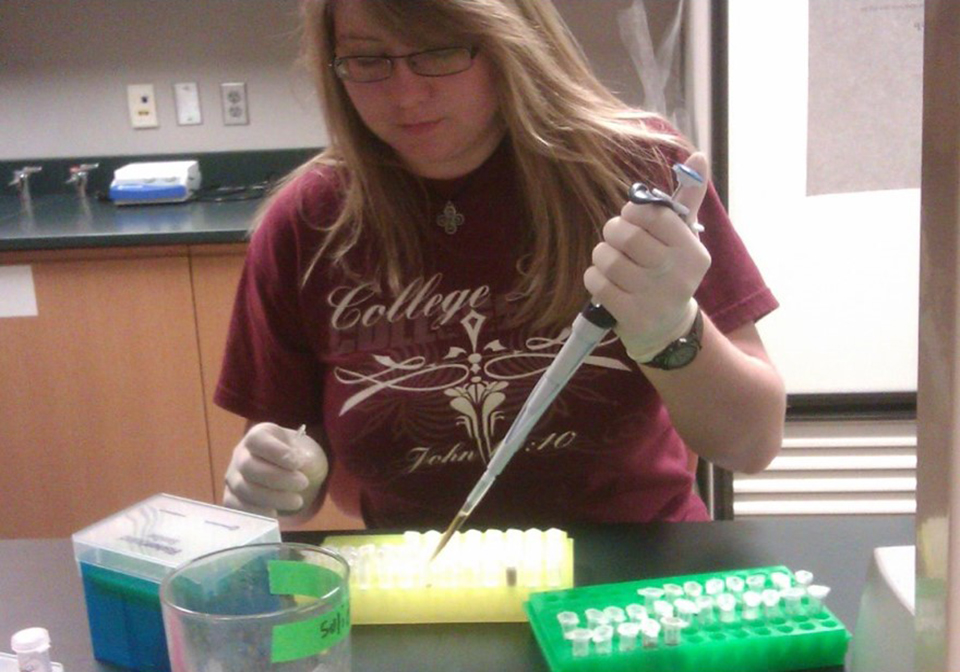
Ticks are brought to the lab for genetic sequencing. 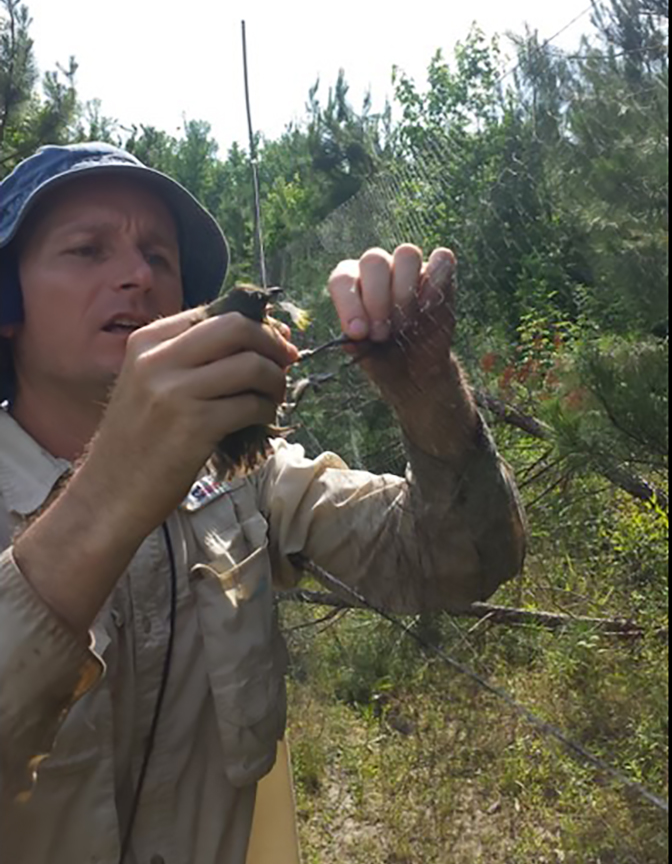
A bird being released from a mist net. 
Cattle also were monitored for ticks and tested. 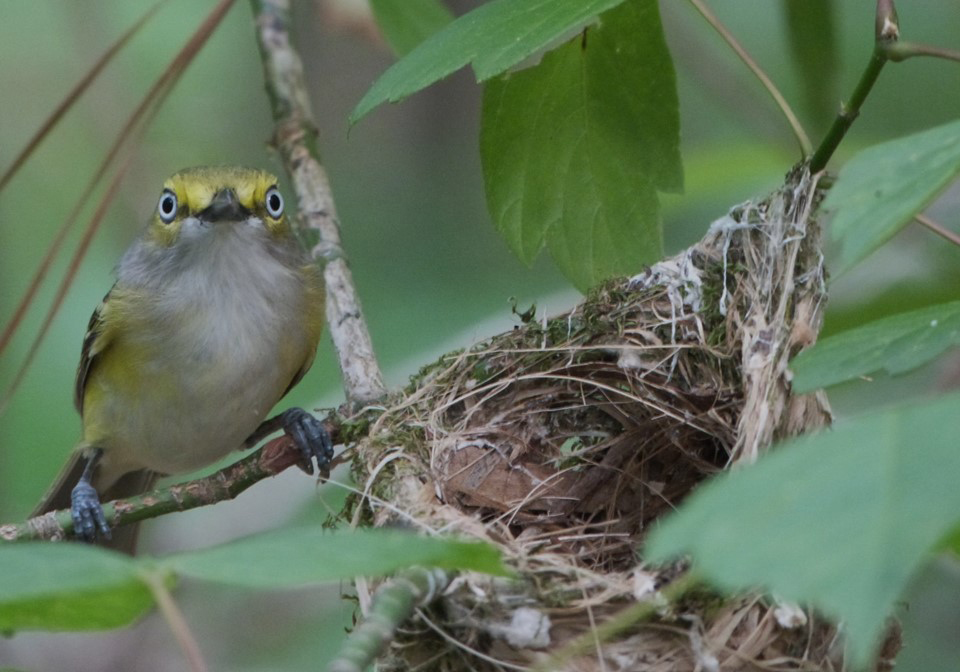
Animals such as the white-eyed vireo, a neotropical migrant were caught and blood was drawn to test for the presence of tick-borne diseases. 
Hunter harvested deer were searched for ticks and all that were found were collected. This was also true for hunter harvested raccoons. Harvest location was recorded to within a 100-acre grid. 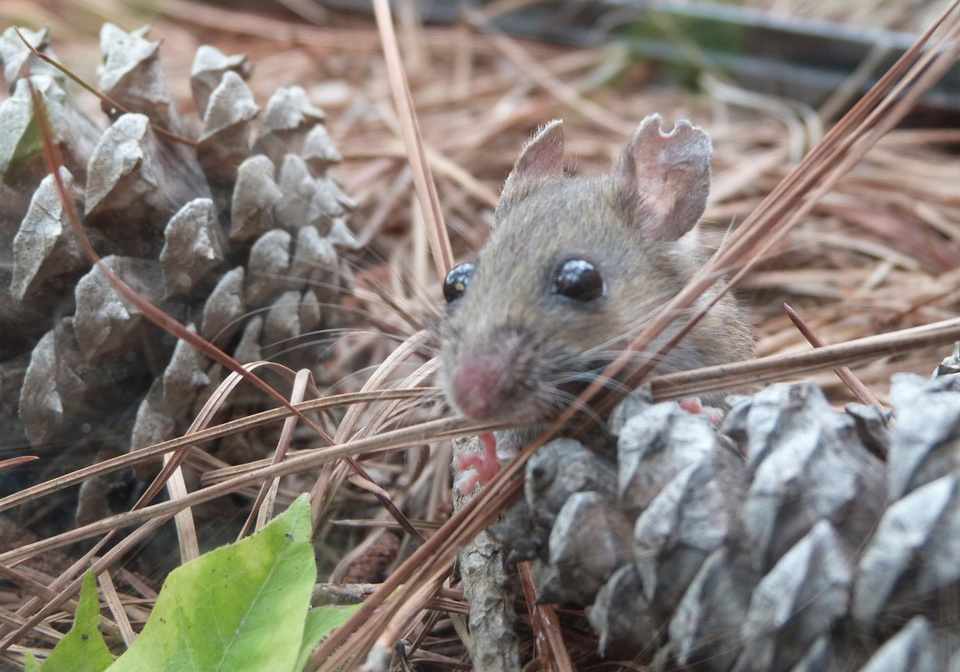
Small mammal populations were sampled with several hundred captured over several seasons and all habitats. All were searched for parasites. 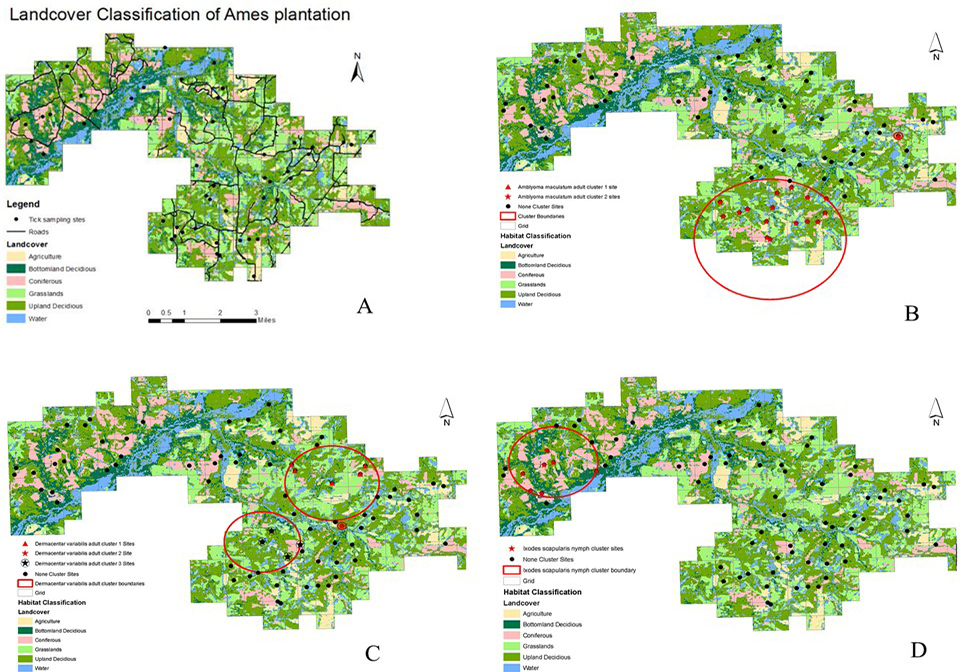
Large-scale results were possible given the expanse available to conduct the work. 
It was a collaborative effort across disciplines and institutions. The University of Tennessee, Dr. Trout-Fryxell led the tick and disease efforts. Dr. Mike Kennedy and others looked at mammalian populations. Dr. James Moore from Christian Brothers and Mr. Michael Collins from Rhodes looked at habitat relationships and avian populations, respectively. Here, students from several majors gather to experience a range of subjects. 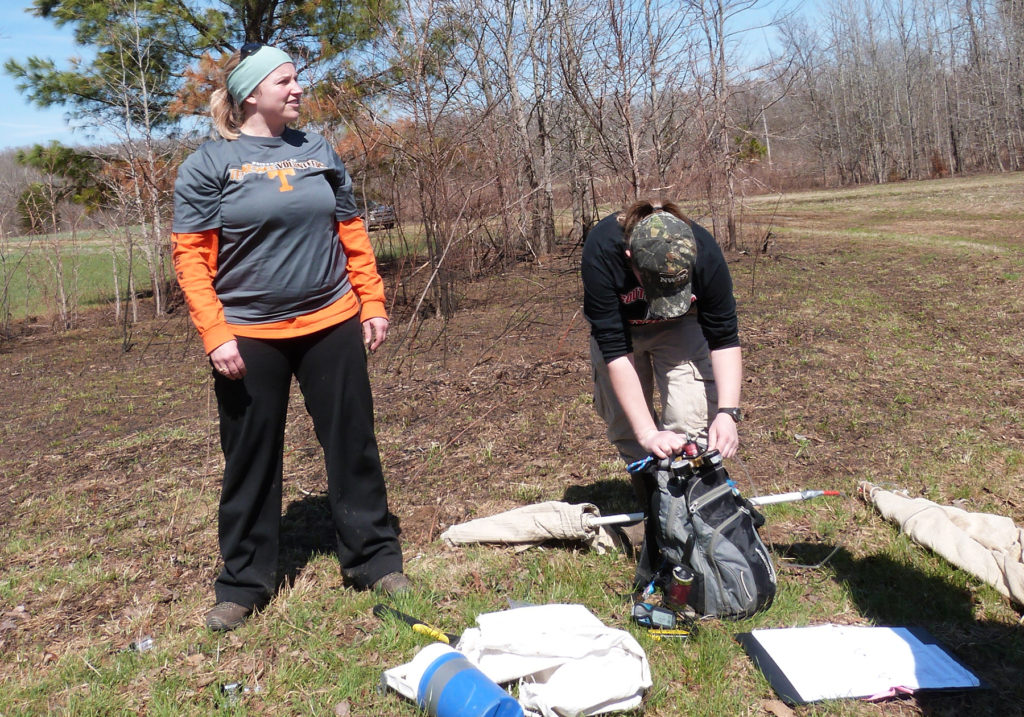
Dr. Becky Trout-Fryxell laying out plots with her graduate students. 
Examination of mycotoxin buildup in overwintering crop residues left in the field for wildlife. 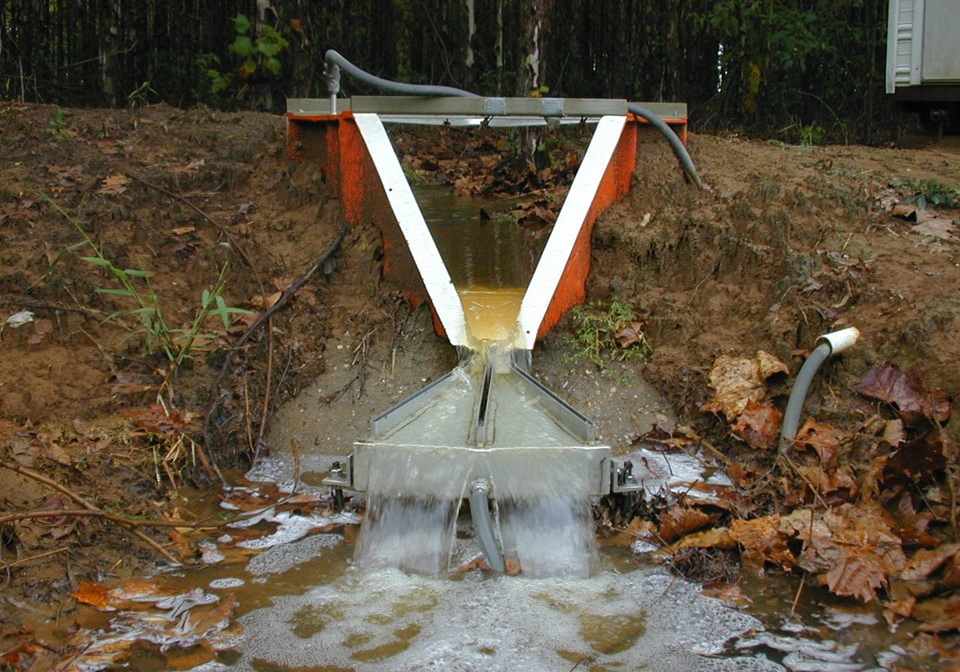
Environmental Impacts of Converting cropland to short rotation woody crops for energy production. And, examination of carbon sequestration on the root systems. 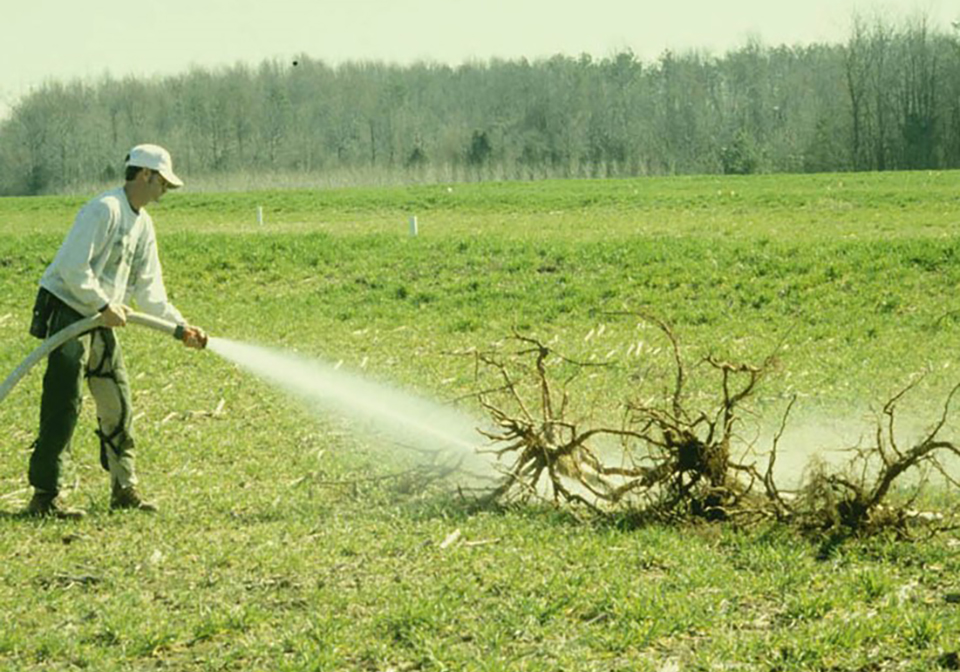
Looking at carbon sequestration in root systems where trees are grown to provide feedstocks for energy production in place of coal. 
Collection of biting flys (Sp. Tabanidae), requiring traps in multiple habitats. Ames led all locations across the state with thousands of individual collections. 
It is often possible to tie research to the large-scale operations occurring at Ames. Or, should the need arise, large tracts can be manipulated to make a particular research project possible.